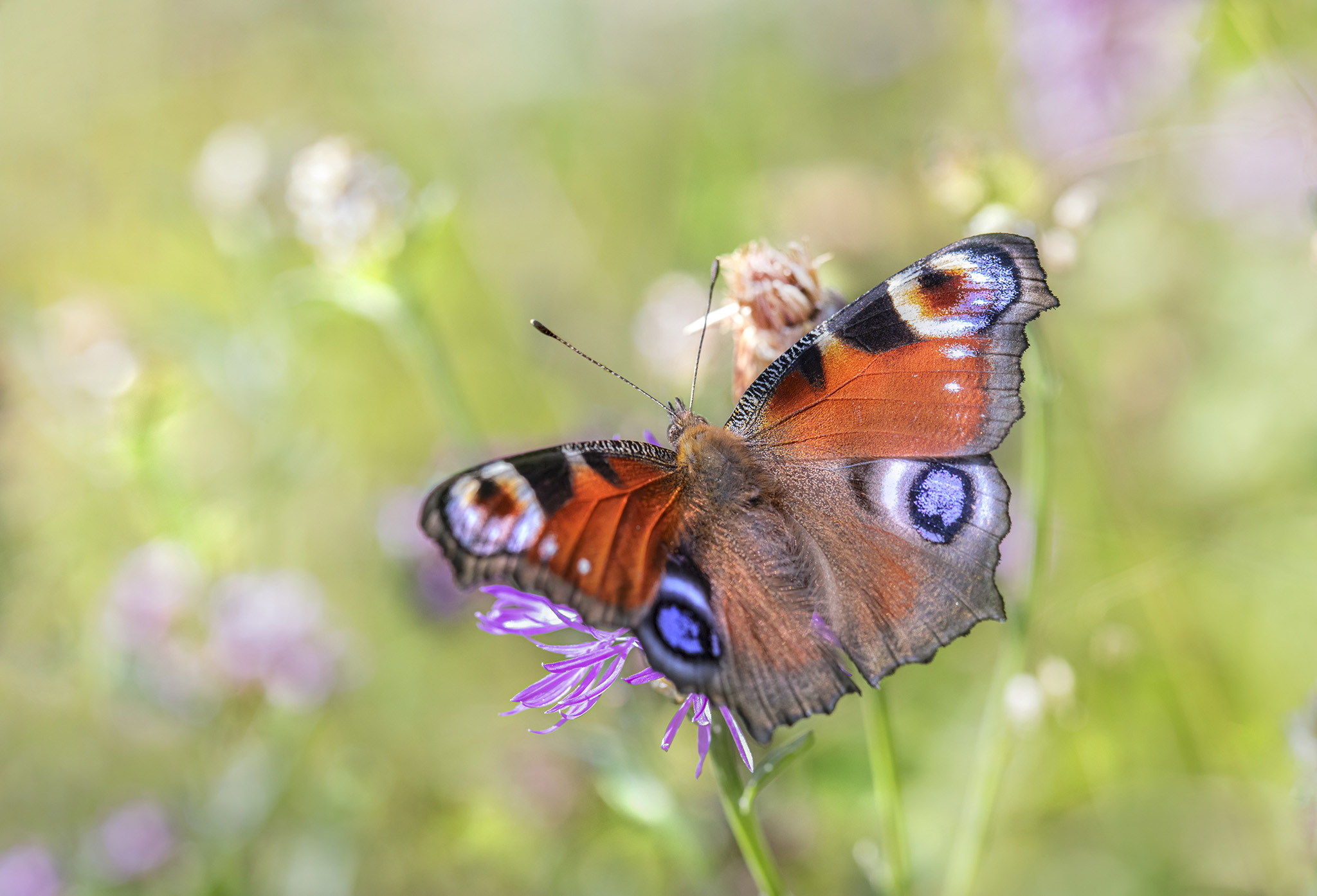The European Peacock (Aglais io), also known simply as the Peacock butterfly, is a colorful and distinctive butterfly species found in Europe and temperate Asia. Here’s some information about the European Peacock:
- Appearance: The European Peacock has a wingspan ranging from 50 to 55 millimeters. It is known for its striking and colorful appearance. Its wings are predominantly reddish-brown with prominent eye-like markings on each wing, resembling the eyes of a peacock’s tail feathers. The undersides of the wings are more cryptically colored, providing camouflage when the butterfly is at rest.
- Distribution: The European Peacock is native to Europe, temperate Asia, and parts of North Africa. It is commonly found in various habitats, including meadows, woodlands, gardens, and parks. It is also known to migrate over long distances, particularly in regions with milder climates.
- Lifecycle: The lifecycle of the European Peacock consists of four stages: egg, larva (caterpillar), pupa (chrysalis), and adult butterfly. The females lay their eggs on the leaves of stinging nettles (Urtica dioica) or other related plants. The caterpillars feed on the leaves of the host plant before pupating. The pupa stage lasts for about two weeks before the adult butterfly emerges.
- Behavior: European Peacocks are active during the day and can often be seen basking in the sunlight with their wings spread open. They feed on the nectar of various flowers, including buddleia, thistles, and bramble. They are strong fliers and may patrol their territory or engage in courtship flights to attract mates.
- Mimicry: The eye-like markings on the wings of the European Peacock serve as a form of defense against predators. When threatened, the butterfly can flash its wings, revealing the eye spots, which may startle or deter potential predators. The eye spots may also mimic the eyes of larger animals, making the butterfly appear more formidable to predators.
- Conservation: The European Peacock is not considered globally threatened, and its population appears to be stable. However, like many butterfly species, it may face threats from habitat loss, pesticide use, and climate change. Conservation efforts focus on preserving and restoring suitable habitats, including the conservation of native wildflower species that serve as nectar sources and larval host plants.
Overall, the European Peacock is a beautiful and iconic butterfly species that adds color and vibrancy to the natural landscapes of Europe and Asia. Its striking appearance and fascinating behavior make it a favorite among butterfly enthusiasts and nature lovers.
Views: 11
Subscribe to the newsletter:
